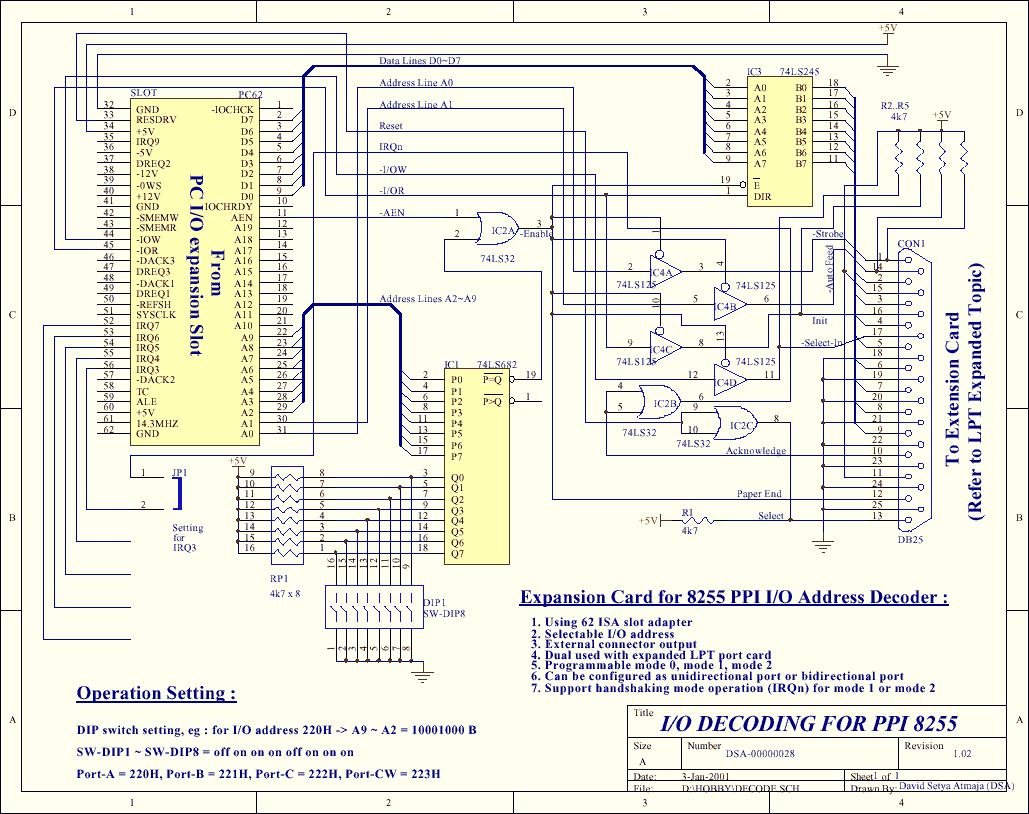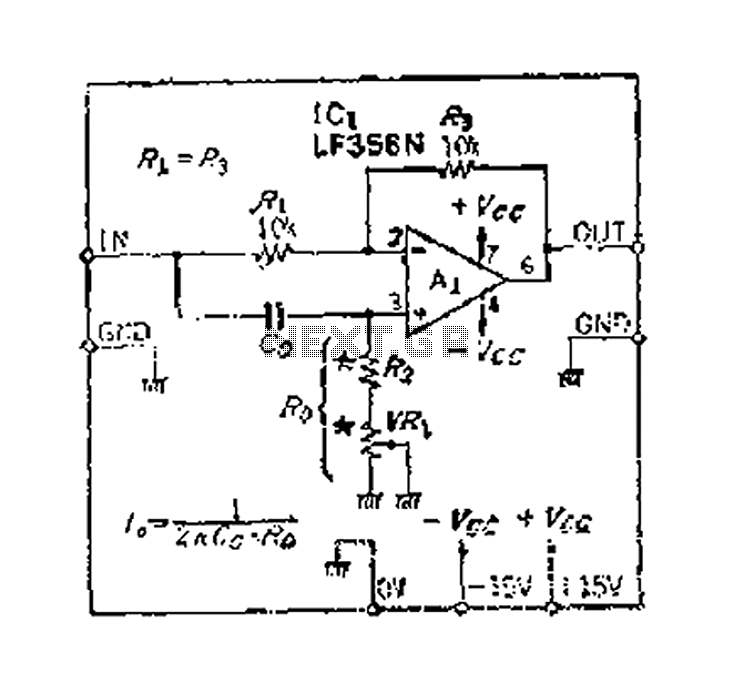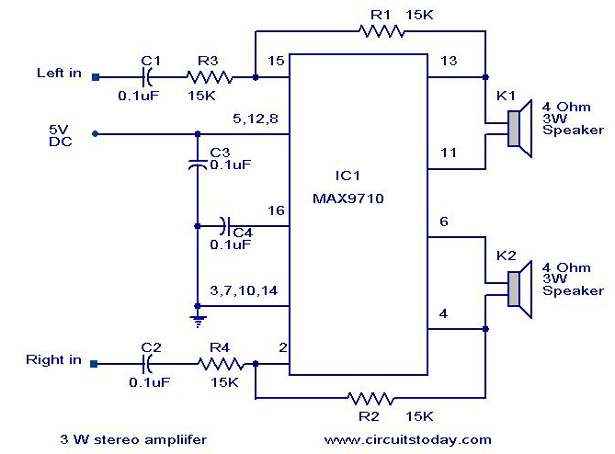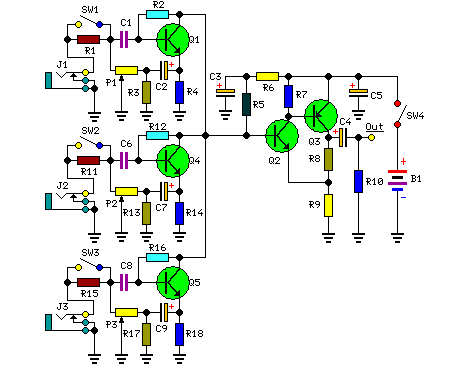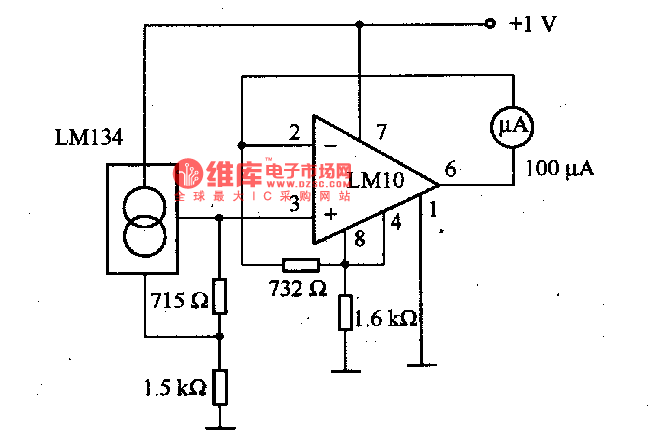
3 Input Mic Mixer Circuit
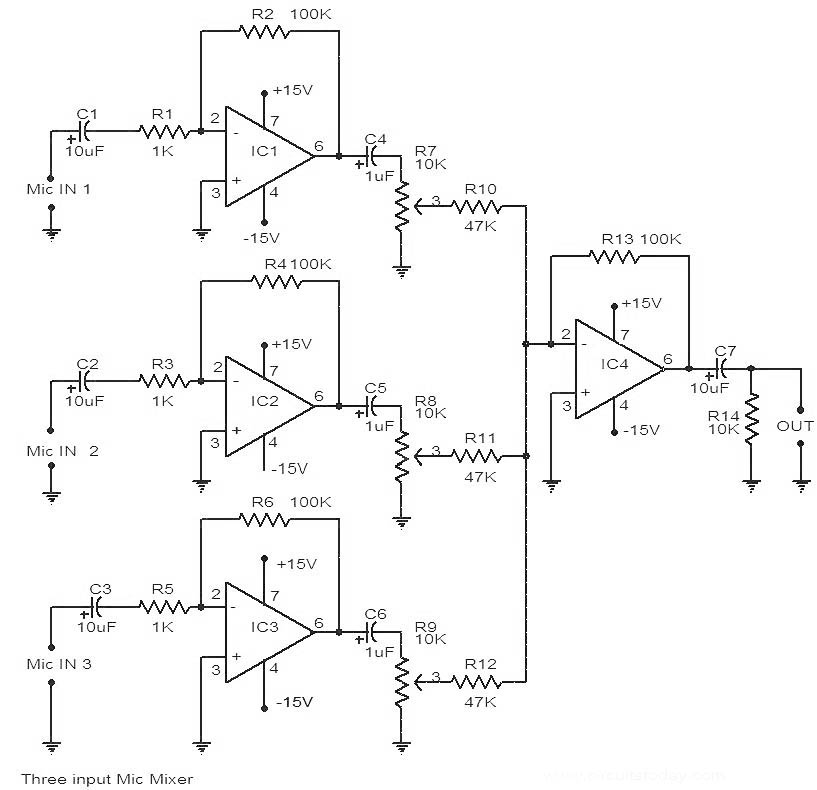
This is a circuit diagram of a 741 IC-based three-input microphone mixer circuit. A total of four 741 ICs are utilized, with IC1, IC2, and IC3 serving specific functions within the design.
The circuit utilizes four operational amplifiers from the 741 IC series, which are well-known for their versatility in audio applications. The primary function of this mixer circuit is to combine audio signals from three different microphones into a single output, allowing for a unified audio feed.
IC1, IC2, and IC3 are configured as non-inverting amplifiers, each receiving input from a separate microphone. The gain of each amplifier can be adjusted through the use of external resistors, ensuring that the output levels from each microphone are balanced. This is particularly important in applications where microphones may have different output sensitivities.
The fourth 741 IC (IC4) is employed as a summing amplifier, where it takes the outputs from the three non-inverting amplifiers and combines them into a single output signal. This configuration allows for effective mixing of the audio signals, maintaining the integrity of each input while enhancing overall sound quality.
Power supply connections for the 741 ICs typically involve dual power supplies, often +15V and -15V, to accommodate the operational range of the amplifiers. Bypass capacitors are recommended at the power supply pins of each IC to minimize noise and ensure stable operation.
The output from IC4 can be further processed or sent directly to a speaker or recording device. Additional components such as capacitors and resistors may be included in the circuit to filter out unwanted frequencies and improve the overall audio quality.
This 741 IC-based microphone mixer circuit is suitable for various applications, including live sound reinforcement, studio recording, and broadcast environments, providing a reliable solution for mixing multiple audio sources.Here is the circuit diagram of a 741 IC based 3 input mic mixer ckt. Altogether four 741 IC`s are used out of which IC1, IC2, and IC3. 🔗 External reference
The circuit utilizes four operational amplifiers from the 741 IC series, which are well-known for their versatility in audio applications. The primary function of this mixer circuit is to combine audio signals from three different microphones into a single output, allowing for a unified audio feed.
IC1, IC2, and IC3 are configured as non-inverting amplifiers, each receiving input from a separate microphone. The gain of each amplifier can be adjusted through the use of external resistors, ensuring that the output levels from each microphone are balanced. This is particularly important in applications where microphones may have different output sensitivities.
The fourth 741 IC (IC4) is employed as a summing amplifier, where it takes the outputs from the three non-inverting amplifiers and combines them into a single output signal. This configuration allows for effective mixing of the audio signals, maintaining the integrity of each input while enhancing overall sound quality.
Power supply connections for the 741 ICs typically involve dual power supplies, often +15V and -15V, to accommodate the operational range of the amplifiers. Bypass capacitors are recommended at the power supply pins of each IC to minimize noise and ensure stable operation.
The output from IC4 can be further processed or sent directly to a speaker or recording device. Additional components such as capacitors and resistors may be included in the circuit to filter out unwanted frequencies and improve the overall audio quality.
This 741 IC-based microphone mixer circuit is suitable for various applications, including live sound reinforcement, studio recording, and broadcast environments, providing a reliable solution for mixing multiple audio sources.Here is the circuit diagram of a 741 IC based 3 input mic mixer ckt. Altogether four 741 IC`s are used out of which IC1, IC2, and IC3. 🔗 External reference
Warning: include(partials/cookie-banner.php): Failed to open stream: Permission denied in /var/www/html/nextgr/view-circuit.php on line 713
Warning: include(): Failed opening 'partials/cookie-banner.php' for inclusion (include_path='.:/usr/share/php') in /var/www/html/nextgr/view-circuit.php on line 713

